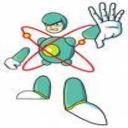Yahoo Answers is shutting down on May 4th, 2021 (Eastern Time) and the Yahoo Answers website is now in read-only mode. There will be no changes to other Yahoo properties or services, or your Yahoo account. You can find more information about the Yahoo Answers shutdown and how to download your data on this help page.
Trending News
A block is at rest on the incline shown in the figure. FREE 10 PTS if its correct!?
A) A block is at rest on the incline shown in
the figure. The coefficients of static and kinetic friction are µs = 0.67 and µk = 0.57,
respectively
The acceleration of gravity is 9.8 m/s^2. What is the frictional force acting on the
36 kg mass?
.B)What is the largest angle which the incline
can have so that the mass does not slide down
the incline?
Answer in units of ◦
C)What is the acceleration of the block down
the incline if the angle of the incline is 37◦
?
Answer in units of m/s

2 Answers
- peterpanLv 77 years agoFavorite Answer
A)
friction force is
F=μsmgcosθ
F=0.67*36*9.8*cos30
F=24.7 N
B)
at rest on have
0=mgsinθ-μsmgcosθ
then
tanθ=μs
θ=arctan0.67=33.82 degrees
C)
ma=mgsinθ-μdmgcosθ
a=g(sinθ-μdcosθ)
a=9.8(sin37-0.57cos37)
a=1.44 m/s^2
- electron1Lv 77 years ago
The block has two forces which affect its acceleration. The component of block’s weight which is parallel to the incline is causing it to accelerate. The friction force is causing it to decelerate. Since the block is at rest. The force parallel is equal to the friction force. Since the block is at rest, use the coefficient of static friction.
Ff = 0.67 * 36 * 9.8 * cos 30 = 236.376 N
To determine the largest angle, set the force parallel equal to the friction force.
Fp = 36 * 9.8 * sin θ
Ff = 0.67 * 36 * 9.8 * cos θ
36 * 9.8 * sin θ = 0.67 * 36 * 9.8 * cos θ
Divide both sides by 36 * 9.8 * cos θ
Tan θ = 0.67
The angle is approximately 33.82˚
Use the following equation to determine the acceleration when the angle is 37˚
Net force = mass * acceleration
Net force = Force parallel – Friction force
Since the block is accelerating, use the coefficient of kinetic friction.
Fp = 36 * 9.8 * sin 37 = 352.8 * sin 37
Ff = 0.57 * 36 * 9.8 * cos 37 = 201.096 * cos 37
352.8 * sin 37 – 201.096 * cos 37 = 36 * a
a = (352.8 * sin 37 – 201.096 * cos 37) ÷ 36 = 9.8 * sin 37 – 5.586 * cos 37
The acceleration is approximately 1.4366 m/s^2




